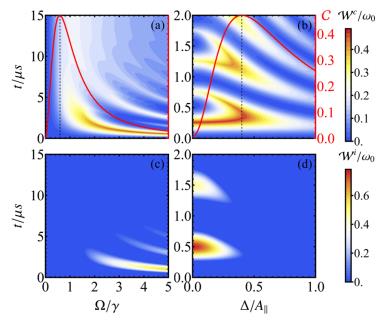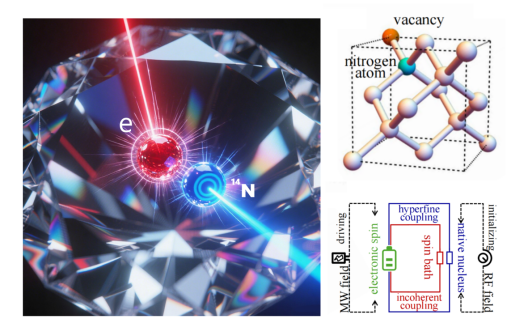Recently, the Trapped Ion Physics Research Group at the Innovation Academy for Precision Measurement Science and Technology (APM), in collaboration with Hubei University and Lanzhou University, has achieved new progress in theoretical research on quantum batteries. The relevant research findings have been published in the top-tier physics journal Physical Review Letters.

Solution for delaying self-discharge

Extractable work dynamics
The rapid development of technologies such as modern electronic devices has created an urgent demand for energy storage devices that are miniaturized, have high power density, and possess large storage capacity. Benefiting from the unique quantum properties in the microscopic world and the bottom-up atomic-level manufacturing processes, quantum batteries are poised to become a new generation of energy storage and supply devices, offering smaller size, stronger charging power, higher storage capacity, and greater extractable work. As an important manifestation of the objective to "manipulate quantum states to achieve new functionalities and develop new technologies," quantum batteries have emerged as one of the primary application directions in the field of quantum technology, and may profoundly transform the way humans utilize energy in the future. Despite the rapid progress made in quantum batteries in recent years, the inevitable decoherence effects in microscopic systems can lead to spontaneous discharge phenomena in quantum batteries, severely restricting their physical realization and practical applications.
The research team has proposed a quantum battery scheme based on the diamond nitrogen-vacancy color center system, which can delay self-discharge, providing a novel approach to address the key scientific issue of spontaneous discharge in quantum batteries. This scheme utilizes the electron spin in the diamond nitrogen-vacancy color center as the physical carrier for the quantum battery. The surrounding carbon-13 nuclear spin bath induces decoherence in the electron spin, thereby triggering the self-discharge phenomenon in the quantum battery. Given that the coherent extractable work in quantum batteries decays more slowly than the incoherent extractable work, this study proposes enhancing the quantum battery's resistance to self-discharge by increasing the proportion of coherent extractable work during the charging process. More intriguingly, the unique hyperfine coupling between the electron and nitrogen-14 nuclear spin in the diamond nitrogen-vacancy color center system provides an ideal means of control for increasing the proportion of coherent extractable work. This study has, for the first time, simultaneously achieved the optimization of extractable work and effective control over self-discharge in quantum batteries. It holds significant theoretical guiding importance for advancing the physical realization of quantum batteries, while also demonstrating the immense potential of the diamond nitrogen-vacancy color center system in the development of quantum energy devices. This research represents another significant achievement by the team, following their proposal of an anti-aging long-distance wireless charging quantum battery scheme in 2024.
The relevant research findings were published in the top-tier physics journal Physical Review Letters under the title "Self-Discharging Mitigated Quantum Battery". The first author of the paper is SONG Wanlu, an associate professor at Hubei University. The co-corresponding authors are ZHOU Bin, a professor at Hubei University, YANG Wanli, a researcher at APM, and AN Junhong, a professor at Lanzhou University.
The relevant research has received support from the "Science and Technology Innovation 2030" project of the Ministry of Science and Technology, projects funded by the National Natural Science Foundation of China, the Innovation Group Project of Hubei Province, the Outstanding Young and Middle - Aged Science and Technology Innovation Team Plan Project of Higher Education Institutions in Hubei Province, and the Outstanding Young Scholar Project of Hubei Province.
The international science and technology news portal Phys.org has reported on the relevant research work under the title "New scheme mitigates self-discharging in quantum batteries".
